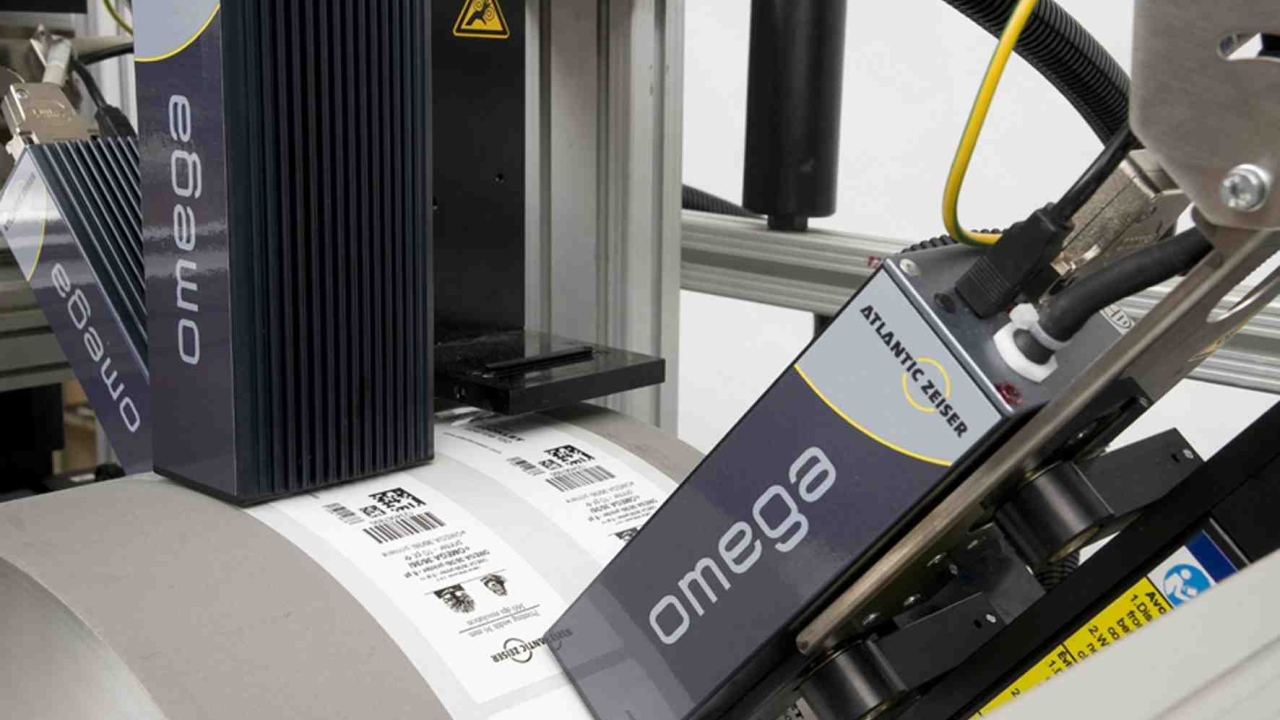Inkjet – top for product identification

Inkjet printing has established a role in high-value labeling, personalization and serialization, with few limits in material and product versatility. It is a cost-efficient production method contributing to product identification, as cost-efficient as the barcode itself and widely used as a means of identification.
The barcode was developed to help identify the origin and life of a product. These inconspicuous black bars with combined series of numbers have globally revolutionized the entire sector of goods logistics, up to POS (Point of Sale). What the consumer might not be aware of is the continuing development and innovative technology research taking place for cost-efficient production identification.
Today, hundreds of different types of barcodes are used globally, with companies in different sectors having evolved their own barcode structures for different sectors.For example, Post AG uses both a datamatrix code and a special yellow-orange 1-D barcode with the most important address information for letter postage worldwide, while the pharmaceutical sector also uses general valid standards based on the stipulations of GS1 (Global Standards 1) for its specially created datamatrix code.
1D (multi-position barcode) or 2D barcodes (‘Pixel images’) are common today. 2D barcodes are the QR code, Datamatrix and others. These 2D barcodes can have error correction data so that incorrect readings can be corrected independently. Datamatrix codes can display 100 times more information and data than a 1D barcode, allowing durability and expiry data, series and product numbers as well as comprehensive manufacturing information to be shown. The versatile bar and pixel code is distinguished by its machine readability and the compression of large quantities of data on a small space on packaging and labels. Machine identification and assignment of products, based on low production costs, are key.
However, open access for everyone conceals a security risk, with the codes being easy to copy and read. The barcode has to be printed on a contrast-rich, reflection-free surface for readability. Contamination and poor print quality can make the features unusable, so encryption options guarantee security.
Digital barcode printing on the latest inkjet printers achieves high levels of quality and the readability of fonts down to 2 points. They can be used to print on packaging, product, or label, and on almost any surface. Atlantic Zeiser has developed special inks which adhere to cardboard, plastic, artificial surfaces, metals and even glass. Digital printing also offers a 100% test quality through re-legibility within the process, with the help of camera test systems. Digital printing, with its late-stage customization, also offers cost efficiencies through direct data and information adaptations in the printing process.
Digital printing is best suited for print jobs where personalized data or variable content, such as numbers or barcodes, has a very short delivery deadline. This is where Atlantic Zeiser, with experience in modern digital printing methods and personalized narrow format printing processes of packaging, labels and plastic cards can help. These are from complete single source solutions, including infeed, printing unit, ink supply, dryer, sensors, camera control, monitor and transport system, to full integration into existing systems.
Laser, thermal transfer, and inkjet printing are among the most common digital printing techniques in the fields of product identification, labeling and packaging.However, laser and thermal transfer printing both demonstrate system-related drawbacks in these fields. Laser printing has disadvantages with its complex safety requirements for extraction and the poor or blurred print contrast. The disadvantages of thermal transfer printing include the lifecycle costs and its limits of adherence to certain substrates. For these reasons, contactless inkjet printing process has the brightest future. Itencompasses both continuous inkjet printing; which involves electrostatic deflection of a continuous stream of droplets onto the print substrate; and Drop-on-Demand technology (DoD), in which ink droplets are generated only on demand.
Binary DoD print heads spray fixed-size droplets of just a few Pico litres. The droplet size is always the same and jetting is based on a clear yes/no decision in terms of print/no print. These heads are capable of applying fine fonts, sharp text with crisp edge definition, clear lines and encoding on the smallest of areas. They are recommended for the digital printing of barcodes and numbering.
UV-cured inks are currently one of the most versatile commodities. Capable of durable adhesion to non-absorbent materials, such as plastic, metal, plasticized surfaces and glass, as well as to paper and cardboard, they are ideal for use with DoD print heads because the nozzles do not dry up and the inks do not harden into solid plastic until they are exposed to UV light. In addition to excellent adhesion and scratch resistance, UV-cured inks also offer a high degree of lightfastness, and the systems are more durable.
For the curing process, Atlantic Zeiser uses environmentally-friendly LED UV systems such as the SMARTCURE™ range which produce no ozone, unlike traditional UV lamps.LED UV systems require only one tenth of the usual amount of energy and offer a significantly longer service life.
In summary, machine product identification can no longer be overlooked in production or goods logistics. Cost efficiencies have to be considered in any production cycle. Industrial digital printing with its inkjet print solutions is specifically intended for inexpensive, high-quality production of barcodes, markings, numberings and serialisations – in contrast, water is the byword for bars, even if this is only in the form of a barcode on a bottle.
Stay up to date
Subscribe to the free Label News newsletter and receive the latest content every week. We'll never share your email address.
